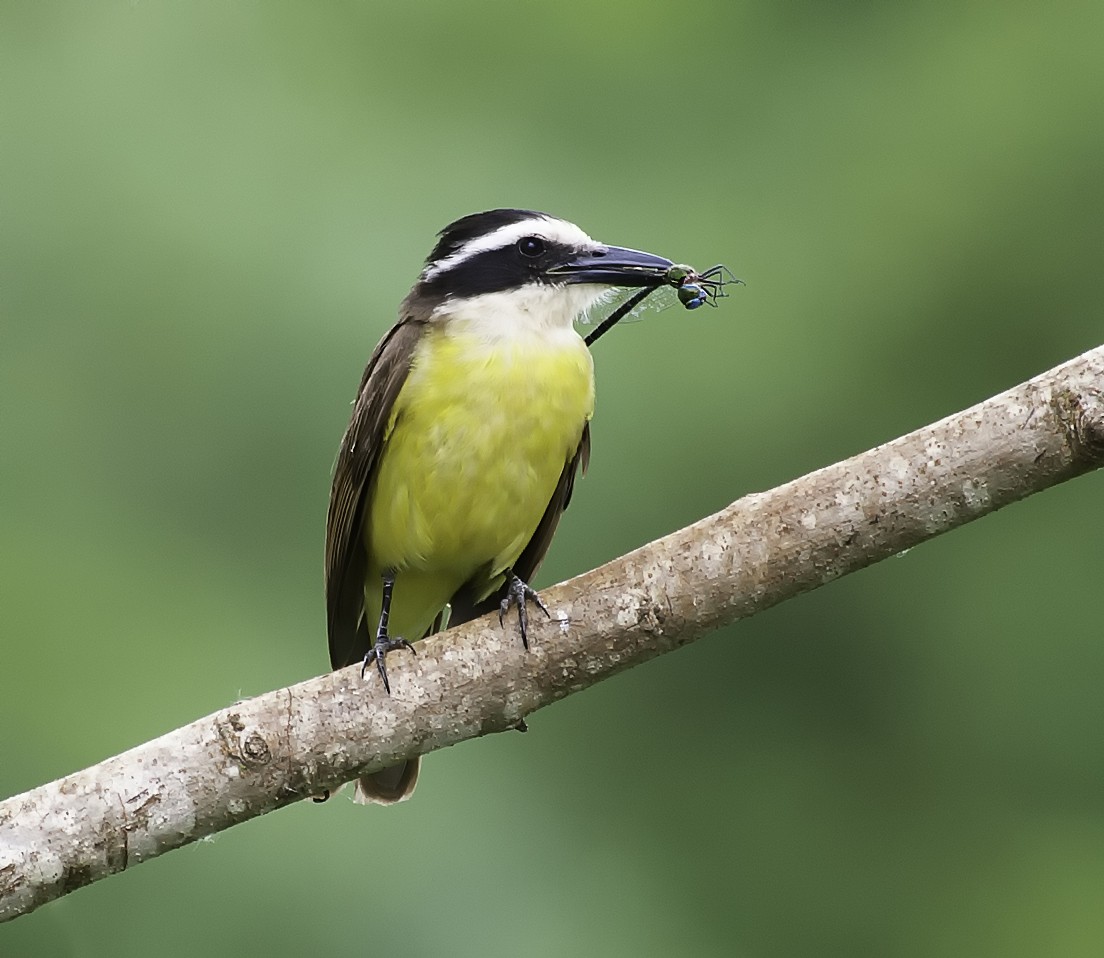Great Kiskadee
A species of Kiskadees Scientific name : Pitangus sulphuratus Genus : Kiskadees
Great Kiskadee, A species of Kiskadees
Botanical name: Pitangus sulphuratus
Genus: Kiskadees
Content
Description People often ask General Info
 Photo By Qwuito , used under CC-BY-SA-4.0 /Cropped and compressed from original
Photo By Qwuito , used under CC-BY-SA-4.0 /Cropped and compressed from original Description
The great Kiskadee is a large bird with bold markings that make this flycatcher easily recognizable. is a bright-colored bird that prefers woodland habitats close to water or open areas. It eats a lot of insects, but also forages for seeds and berries and is known to dive into shallow water for small fish.
Size
24 - 25 cm
Life Expectancy
6.9 years
Nest Placement
Tree
Clutch Size
2 - 5 eggs
Incubation Period
1 - 2 broods
Number of Broods
15 - 22 days
Nestling Period
10 - 12 days
Feeding Habits
Great Kiskadee are omnivores that exhibit versatile feeding behaviors, catching flying insects midair, gleaning arthropods and small vertebrates from vegetation, fishing by hovering and plucking prey from water surfaces, and foraging for fruit. They also scavenge on human-provided food and display aggressive mobbing towards raptors when not hunting.
Habitat
Great Kiskadee are versatile birds inhabiting a diverse range of environments including open grasslands with sparse trees, thorn-scrub, mesquite-cactus regions, and suburban areas. These birds show a preference for environments near water bodies such as lakes, rivers, and ponds. They thrive at various altitudes, often found in tropical deciduous forests as well as in agricultural landscapes like shade-coffee farms and fruit plantations. They generally avoid dense woodlands, opting for locales with clearings that facilitate their active foraging lifestyle.
Nest Behavior
Great Kiskadee pairs jointly build their nest, collecting materials from the ground, airborne vegetation, or pilfering from other nests. The construction starts with a soft grass cup progressing to a domed roof. Nesting can include re-purposing cavities like old woodpecker holes. Both parents share egg and chick care duties.
Nest Characteristics
The great Kiskadee creates a tall, domed nest approximately 13-18 inches in height and 10 inches in width, with a side entrance adorned with an awning-like overhang. Nests are typically situated in tree forks, crowns, and sometimes over water, concealed by foliage or vines, and may be located in trees such as hackberries or in symbiotic acacias with stinging insects. They utilize grasses, twigs, moss, and man-made materials for construction.
Dite type
Insectivorous
People often ask
General Info
Feeding Habits
Bird food type
Bird Feeder Type

Platform
Sounds
Song
Recording location: Mexico
Call
Recording location: Suriname
Call
Recording location: Suriname
Behavior
Great Kiskadee are noted for their distinctive and boisterous behavior, frequently engaging in loud, unified calls. Their lack of fear around humans often leads them to populated areas in search of food, including human-provided sources. Great Kiskadee exhibit a social aspect by occasionally assembling into mixed-species flocks, though they maintain a territorial nature during breeding seasons with specific defense behaviors such as screeching, chasing, and unique wing displays. These birds are monogamous, with strong, year-round pair bonds that can endure across breeding cycles.
Distribution Area
Its range extends from the Lower Rio Grande Valley in southern Texas south through Central America to southern Argentina. It does not occur in Chile. The great kiskadee was introduced to Bermuda in 1957. Two hundred birds were imported from Trinidad in an attempt to control the number of lizards, especially the tree lizard (Anolis grahami) which had itself been introduced. 
Species Status
Not globally threatened.
Scientific Classification
Phylum
Chordates Class
Birds Order
Perching birds Family
Tyrant flycatchers Genus
Kiskadees Species
Great Kiskadee